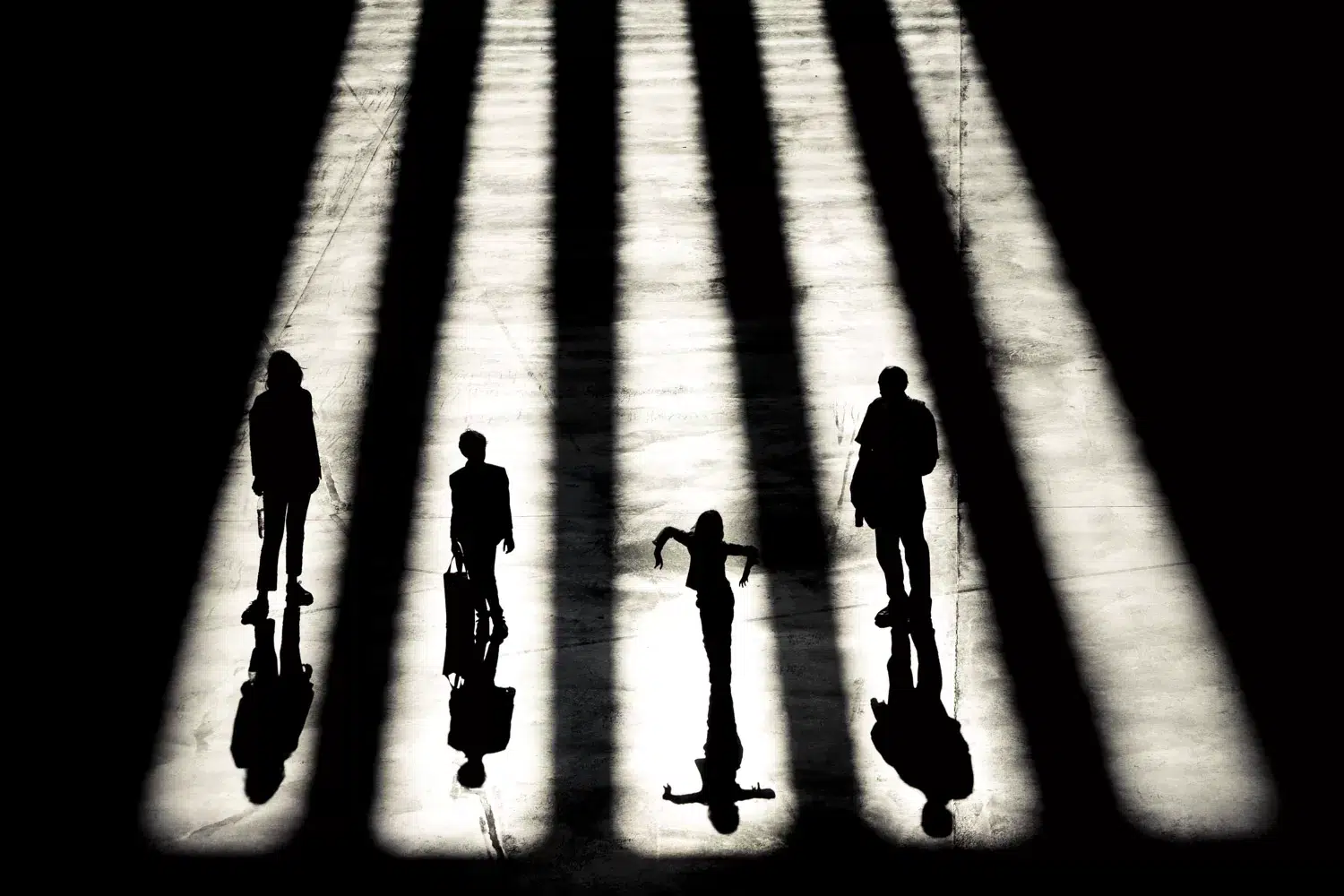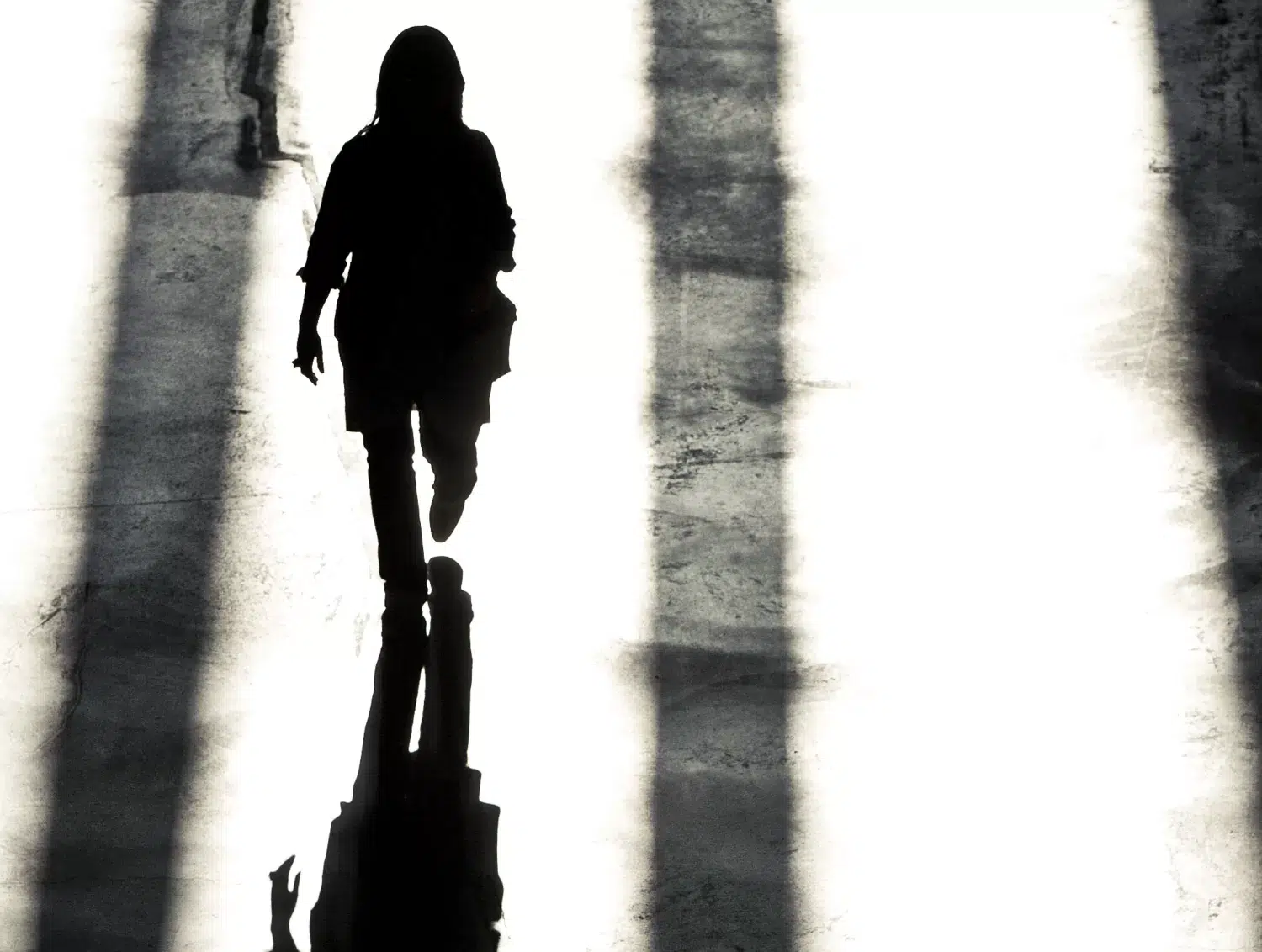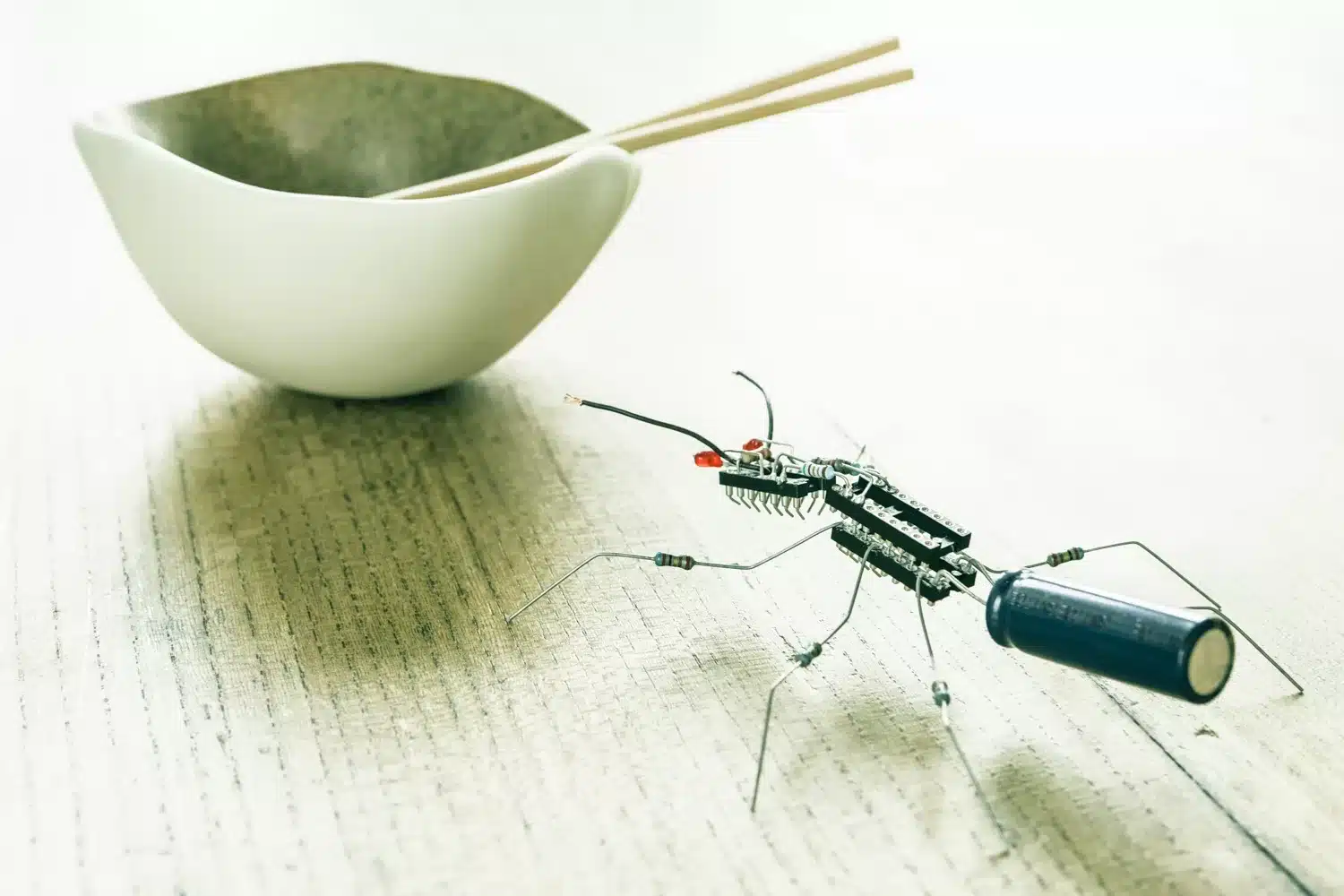
In June 2008, the Tate Modern’s iconic turbine hall became the stage for a striking visual exploration of light and human interaction.
On a sunny afternoon, with light pouring in and creating dramatic streaks across the mezzanine floor, a series of photographs captured a fleeting moment of connection between individuals, their shadows, and the vast architectural space.
The result is a fine art photography project that transcends mere observation, turning everyday movement into an ephemeral performance.
At the heart of this series is a compelling interplay of light and shadow. The high-contrast imagery, shaped by the stark natural light streaming through the hall’s windows, transforms ordinary figures into silhouettes, flattening them into graphic, almost abstract forms.
This interplay evokes the chiaroscuro techniques of classical painting, yet here the medium is not oil on canvas but bodies in motion, frozen in time through the lens of a camera.
The visual rhythm is key. Strong vertical beams of light cut through the frame, dividing the space into illuminated and obscured zones, while the figures and their shadows dance across these boundaries. The shadows, dark and elongated, feel like ghostly extensions of the subjects themselves, amplifying their presence and hinting at the dualities of identity—solid versus transient, real versus reflected.
This photographic series is as much about the people as it is about the space. The Tate Modern’s turbine hall, vast and industrial, serves as both canvas and stage. The individuals captured within it, from adults to children, move freely, seemingly unaware of the visual poetry their actions create. Their movements, playful and unguarded, contrast beautifully with the hall’s geometric rigor, bringing a sense of humanity to the starkness of the environment.
Conceptually, the project taps into themes of identity, temporality, and interaction. The anonymity of the figures allows them to become universal symbols of the human experience. Their shadows, tethered yet independent, suggest an exploration of selfhood, a meditation on the ephemeral nature of existence. These fleeting moments of alignment between body and shadow underscore the impermanence of time, a poignant reminder of how light itself is in constant motion.
The choice of a long 200mm lens adds another layer of significance. This perspective creates a sense of distance, turning the mezzanine into an observatory and the photographer into an unseen witness. The compression of space produced by the lens flattens the scene, allowing the shadows and figures to take on equal visual weight, heightening the abstract, graphic quality of the compositions.

This series also speaks to the power of light as a narrative device. The sunlight, which ebbs and flows with the time of day, shapes the very fabric of the images. It dictates not only the aesthetic but also the temporality of the work. Each photograph captures a unique moment that will never be repeated, reflecting the transient nature of both light and life.
What makes this project particularly compelling is its ability to merge simplicity and complexity. On the surface, it is a series of candid moments in a public space. Yet, upon deeper reflection, it becomes clear that these images are meditations on the human condition, the passage of time, and the interplay between structure and spontaneity.
The photographs invite viewers to linger, to trace the lines of light and shadow, and to consider the role of the individual in a larger, shared environment. The turbine hall, once a site of industrial labour and now a beacon of contemporary art, becomes a metaphor for transformation, both in its physicality and in its role as a space for creative expression.
This series is more than a documentation of light and shadow; it is an exploration of what it means to exist, to move, and to leave an ephemeral imprint on the world. It is a quiet yet profound celebration of the ordinary, transformed into something extraordinary through the simple yet powerful act of observation.
Elias Ward
Independent Photography Critic
London, UK






